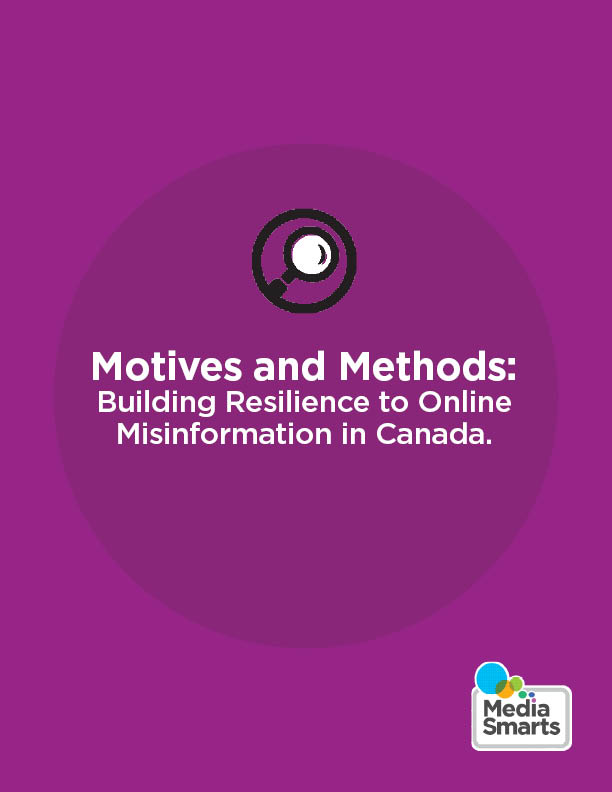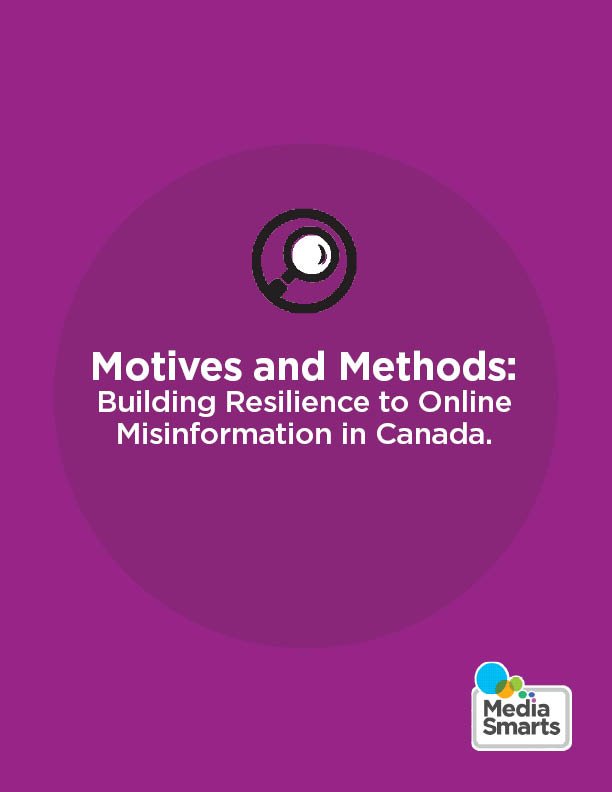A new research report soon

Mediamamarts suggested Motifs and methods A research project to better understand how Canadians control and share information online and find the best ways to help them recognize and respond to online misinformation.
This study builds on the success of Mediasmarts Fake (BTF) A program that teaches Canadians to verify information. We have developed five new ones for this project BTF Videos dealing with new challenges such as Deepfakes. The videos dealt with why it is important to verify information (motifs) and how to do it (methods).
A study financed by Canadian heritage, will be released in April 2025 And he used a mixture of conductive in two phases: a survey of 5,000 Canadians and interactive focus groups.
The survey dealt with how the participants’ facts have changed after tracking and BTF Video, as well as their views on accessibility, lifting and impact. She also explored their motivation to share information, how often they control reality and how they feel confidently in their inhabited.
Focus groups offered a deeper insight into patterns, themes and demographic differences that emerged after the survey. One focus group specifically focused on older adults (55+), who are often more vulnerable to misinformation.
Based on these findings, we provide recommendations for designing efficient video interventions that create civic resistance to misinformation in Canada.
The full message will be available at the end of April, but given the upcoming Canadian election Mediasmart shares soon prepared Key finding a document Summary of the study results. This information can be useful for fighting in combat Elections related Disinformation.
What we found
-
Difficult with distinguishing: Most participants tried to distinguish true from false information and often relied on intuition or conjecture.
-
Reliability of Source: Participants believed more often if they come from well -known publications or reliable friends on friends.
-
Lack of awareness of the tools to check the facts: Many participants thought it was difficult to find the tools of fact control, most of which did not know about relatively popular tools such as Snopes.
-
Disinformation paradox: Although they believed that they were good in observing misinformation, the participants felt amazed at the process of controlling the facts and most tried to find out whether the information was true or not.
-
Visual misinformation (as Deepfakes): While less than half of the participants said they believe they could identify images generated by AI online, many tried to do so during the exercises and were wrong fake pictures for the real.
-
Older adults (55+): Older adults more often believed false information and were less self -confident in the ability to identify false content compared to younger participants.
-
Sharing habits: Most participants did not regularly share content online, but those who said they checked their accuracy before sharing.
Recommendations for creating video checking videos
Here are a few things to keep in mind when creating a video content focusing on misinformation and teaching facts on the basis of our journey:
-
Consider visual misinformation different: Focus on visual misinformation separately from text misinformation.
-
Positive Message Sending: To assure individuals that they must be experts to identify visual misinformation, and at the same time recognize how they can feel stunning.
-
Avoid “hacks”: You rely on methods such as approaching in the pictures or measuring amnt flashing in the video, because this work ”can become outdated.
-
Video availability: Keep videos within 60 seconds, use a bright language and focus on one key message, escapes for older adults.
-
Relative scenarios: Share personal stories and real examples that help individuals, especially older adults, feel in the process of controlling reality and not about themselves.
- Invite people to restore their ability to distinguish true from false information and acknowledge their bias and restrictions.
-
Addressing paradox address: Be aware that while people often think they are good when they say what the truth is online, they still express great and limited knowledge in terms of checking the facts.
-
Learn the Trio information: The emphasis that not every information individual encounters online must be checked. Instead, people can prefer what to look at, based on its elevators, a sense of importance and urgency.
A wider recommendation
Mediamamarts recommends the following system approaches based on this research:
-
Nagoing Research: Behavior includes research that corresponds to the pace of online information environment and misinformation.
-
Platforms: Hold the platforms responsible for improving the quality of the circulated online information (including the development and use of facts to check the facts).
-
Government: To develop and implement the National Action Plan for Education in the field of digital media, which is essential for lifelong learning needed to build resistance to misinformation.
-
Cooperation between the sector: Support the exchange of knowledge and cooperation between community organizations and other key stakeholders (scientists, industry, politicians, etc.), which serve the needs of the diverse Canadian population to enhance the impact of interventions in the literacy of digital media.
Digital media literacy is essential to authorize Canadians to navigate online information, fight misinformation and make informed decisions. This project provides evidence -based strategies for researchers, educators and politicians to improve the skills of controlling the facts and critical thinking of Canadians.

